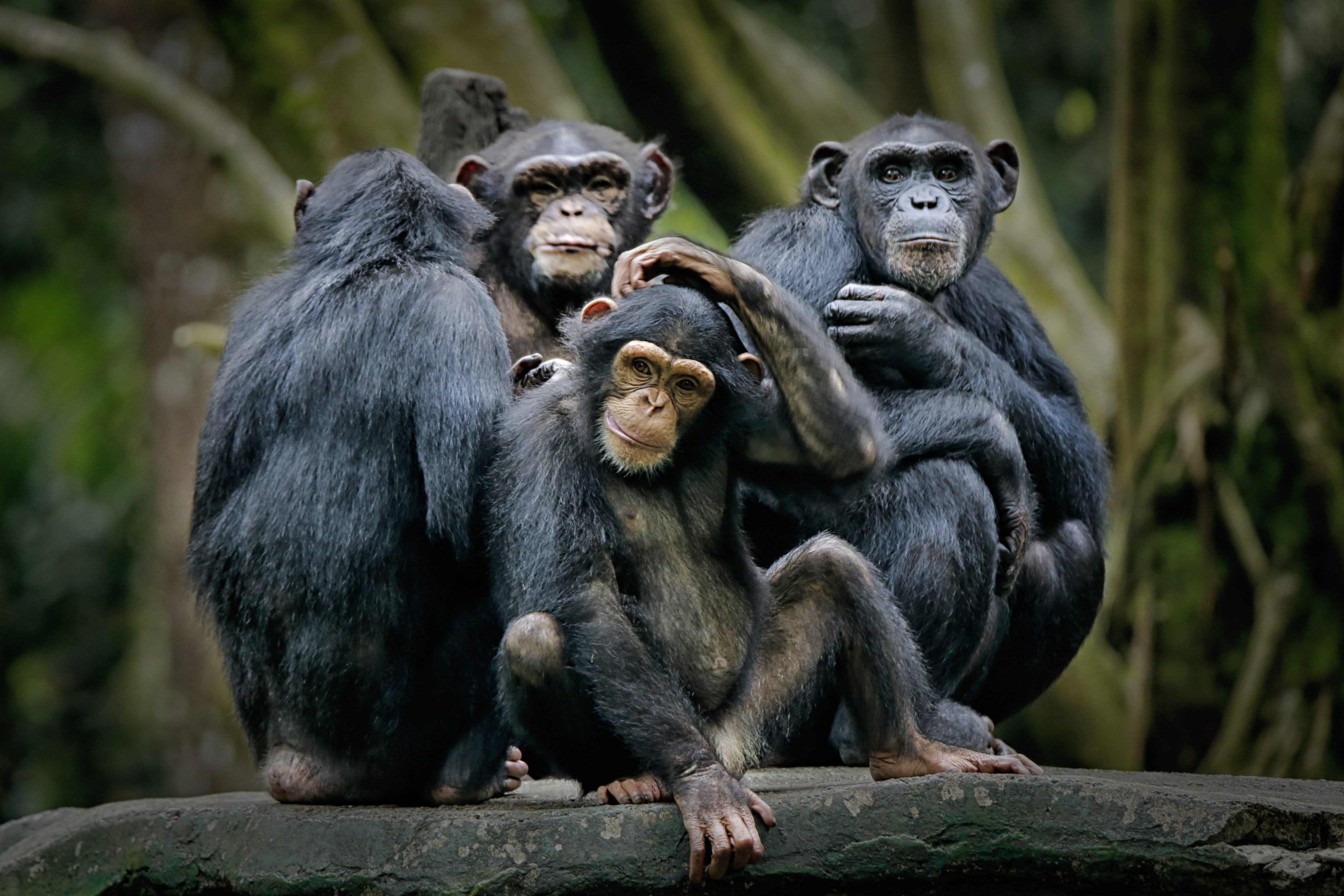Coronavirus could be catastrophic for great apes, experts warn
Even mild human pathogens can be dangerous for great apes.

The coronavirus, having now traveled the globe and claimed over 23,500 human lives, might also pose a threat to great apes, experts warned.
Great apes are our closest relatives and the species that makes up this group — including bonobos, gorillas, orangutans and chimpanzees — are endangered. Though we don't share the same language or society, we share about 98% of our DNA with chimpanzees, Live Science previously reported. And, it seems, we have another unfortunate similarity: our susceptibility to the same respiratory illnesses.
It's known that "transmission of even mild human pathogens to apes can lead to moderate-to-severe outcomes," conservation experts from the Great Ape Health Consortium wrote in a letter published Tuesday (March 24) in the journal Nature.
Related: 13 coronavirus myths busted by science
It's not known, however, whether the coronavirus, known as SARS-CoV-2, will affect apes as it does humans. "As leading experts in the conservation and health of these animals, we urge governments, conservation practitioners, researchers, tourism professionals and funding agencies to reduce the risk of introducing the virus into these endangered apes," the experts wrote.
Great-ape tourism should be suspended and field research should be reduced, they wrote. However, this must be done while still assessing risks. "For example, poaching could rise with fewer people in the vicinity," they wrote.
Some countries, such as Gabon and Rwanda, have already stopped tourism and both flight cancellations and border closures have reduced travel to those regions, according to The Washington Post.
Sign up for the Live Science daily newsletter now
Get the world’s most fascinating discoveries delivered straight to your inbox.
Though it's not yet clear, "at this point, it is safest to assume that great apes are susceptible to SARS CoV-2 infection," representatives of the International Union for Conservation of Nature's Species Survival Commission Health Specialist Group and the Primate Specialist Group wrote in a statement. "It is strongly recommended that great ape visitations by humans are reduced to the minimum."
Essential staff who can't completely isolate from the apes need to stay at least 7 meters (23 feet) away from them, but 10 meters (33 feet) is "strongly advised," they wrote. No one who is ill or who has been in contact with an ill person in the last 14 days should be allowed to visit the animals, they wrote.
People can reduce the risk of transmitting the novel coronavirus to great apes by adhering to the International Union for Conservation of Nature's book called the "Best-Practice Guidelines for Health Monitoring and Disease Control in Great Ape Populations," the experts wrote in the letter.
Some of these recommendations include wearing clean clothing and disinfecting footwear before going anywhere near the animals. Transmission can also be reduced by requiring face masks be worn by anyone coming within 10 meters (33 feet) of the animals.
- 28 devastating infectious diseases
- 11 (sometimes) deadly diseases that hopped across species
- The 12 deadliest viruses on Earth
Originally published on Live Science.
OFFER: Save at least 53% with our latest magazine deal!
With impressive cutaway illustrations that show how things function, and mindblowing photography of the world’s most inspiring spectacles, How It Works represents the pinnacle of engaging, factual fun for a mainstream audience keen to keep up with the latest tech and the most impressive phenomena on the planet and beyond. Written and presented in a style that makes even the most complex subjects interesting and easy to understand, How It Works is enjoyed by readers of all ages.

Yasemin is a staff writer at Live Science, covering health, neuroscience and biology. Her work has appeared in Scientific American, Science and the San Jose Mercury News. She has a bachelor's degree in biomedical engineering from the University of Connecticut and a graduate certificate in science communication from the University of California, Santa Cruz.










